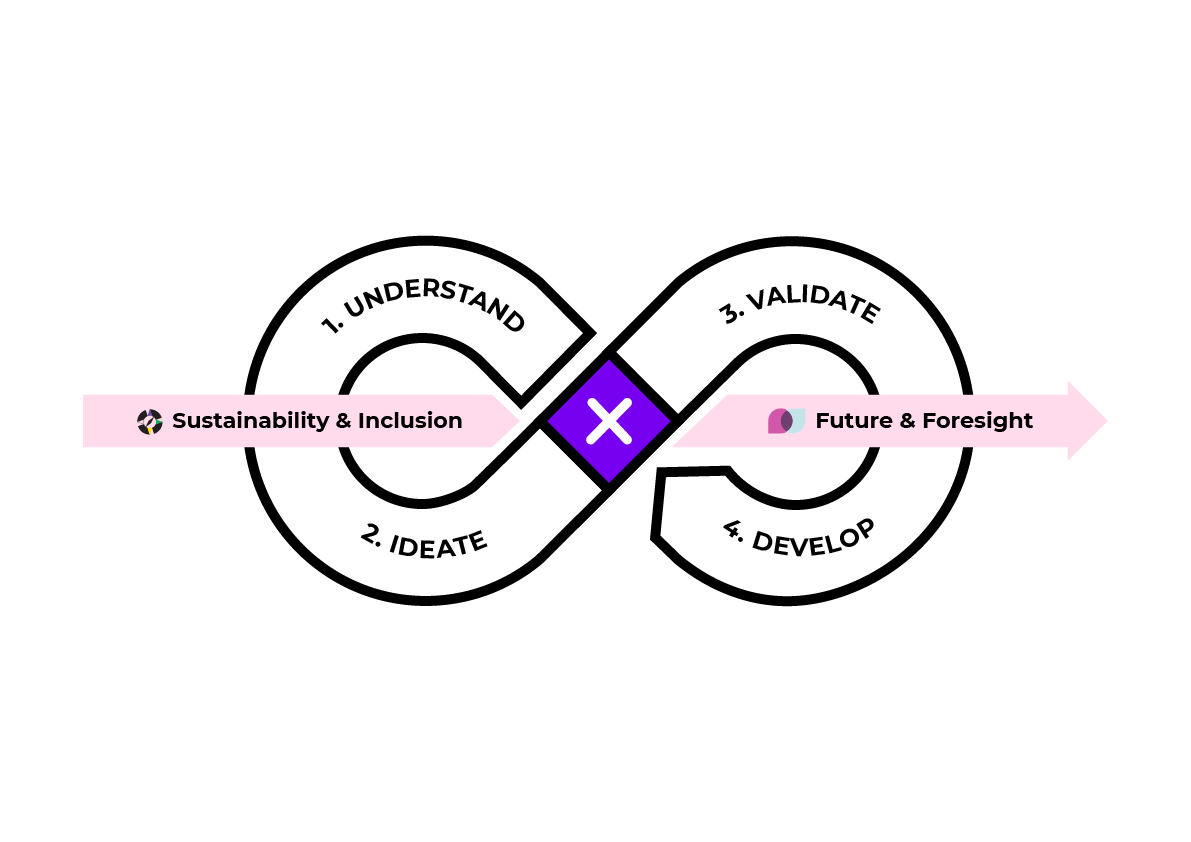This blog was inspired by the Epicenter Impact Summit 2023 event organized by Epicenter. The summit aimed to explore ways of supercharging local entrepreneurial ecosystems to accelerate growth and innovation for a better and more sustainable future. At the event, our sustainability designer Katri Pakula gave a talk on the impact of digital sustainability and design.
Digital Sustainability in Service Design — minimal carbon footprint and maximal carbon handprint
Digital sustainability in an environmental viewpoint refers to the use of digital technology in a way that minimizes its negative environmental impact and grows its positive environmental impact. Negative is referred to as digital carbon footprint and positive as digital carbon handprint. Minimizing negative impact includes everything from using renewable energy to power data centers to reducing the energy consumption of digital devices. The carbon footprint of the whole ICT-industry including data centers, servers, routers, and devices is hard to grasp, but latest studies gives us more understanding of the scale:
The share of the ICT-industry’s greenhouse gas emissions globally is estimated to be at most 3–5% of the world’s total emissions and the total electricity consumption of ICT-industry has been estimated in recent years to be around 7–10% (1). The carbon footprint of our global digitalisation is, at this moment, in similar ballpark figure or even higher than that of the aviation industry.
However, digital technology has been estimated to cut global emissions by 15% in other industries when done sustainably (2). For years, digitalisation has removed unnecessary carbon emissions by e.g. production processes optimisation or by decreasing need for transportation. Further, digital sustainability can improve digital equality by ensuring that the digital infrastructure is accessible and inclusive for everyone, regardless of their location, economic status or abilities.
It is often stated, that 80% of a product’s future carbon footprint can be determined during the product design phase (3). This number is from the field of tangible product design, where the design phase defines things like materials, supply chains, logistics, and other factors that can impact a product’s sustainability. Although this is not the whole truth in service design or communication design, the groundwork of digital design can have long lasting effects. Through digital sustainability in service design and by being mindful of e.g. user paths, page size and accessibility during the design phase, we can significantly reduce the carbon footprint of digital products and services and increase their quality for various users.
Our Impact and Sustainability Journey
At Exove Design, we have evaluated where our biggest impact is, and as expected, it is in our client projects. We believe that design has a critical role to play in digital sustainability, and we have started by renewing our design process to guide all our work. We talk about the planet, people, and business and how we can make a positive impact on all three.

The design process we created is based on the Double Diamond method and considers sustainability and inclusion throughout the process. It is an iterative process that can involve repeating different phases as needed. The ultimate goal is to create sustainable, future-proof services and products that serve the needs of organizations, users, and the planet. The process functions as a checklist for our work, guiding us to incorporate sustainability and inclusion into every aspect of the design process.
How We Help Our Clients with Sustainability
In all our work, we prioritize inclusion and the environment. We help our clients at different stages of their sustainability journey, whether they are unsure of how to begin, have already started taking action, or are looking to make sustainability a part of their daily processes. By working together with our design professionals, we can accelerate an organization’s change in responsibility, not just in terms of climate effects but across all aspects of sustainability.
In conclusion, design has a vital role to play in digital sustainability. By being mindful of the environmental impact of our design decisions, we can significantly reduce the carbon footprint of digital products and services. At Exove Design we are committed to making a positive impact on the planet, and we strive to help our clients do the same. Together, we can create a more sustainable future for all.
We are planning on writing more blogs about digital sustainability. Please let us know what you think about this subject and what you would like to learn more about!
Read more about our offering for digital sustainability here (in Finnish).
References
(1): Ministry of Transport and Communications 2021:4: Climate and Environmental Strategy for the ICT Sector. https://julkaisut.valtioneuvosto.fi/bitstream/handle/10024/162910/LVM_2021_04.pdf
(2): https://www.weforum.org/agenda/2019/01/why-digitalization-is-the-key-to-exponential-climate-action/
